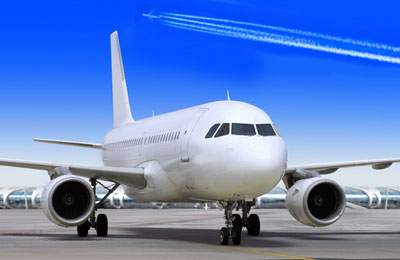
Mideast carriers top global air freight growth
Geneva, March 5, 2014
The global air freight market made a strong start to the year led by Middle Eastern carriers which grew at a racy 10.7 per cent year-on-year, said a report.
Growth was solid across all regions, with European airlines continuing to benefit from Europe’s recovery from recession, posting 6 per cent growth, stated the International Air Transport Association (IATA) in its data on January performance.
The IATA report showed a strong rise in air freight growth compared to a year ago. Global freight tonne kilometers (FTKs) rose 4.5 per cent in January compared to last year.
This is a significant acceleration on the 2.2 per cent year-on-year growth rate recorded in December, and is well above the 1.4 per cent full-year growth reported for 2013 as compared to 2012, it added.
According to IATA, the Middle Eastern carriers once again grew the fastest, by 10.7 per cent year-on-year.
The volumes grew on the back of the growth in Europe and other regions. In addition, carriers in the region continued to expand capacity as well as to increase their network and the services they provide, broadening the types of commodities they can transport, it added.
Capacity growth, though, remained broadly in line with demand, increasing 11.5 per cent, said the IATA report.
Carriers based in the Asia-Pacific region, which account for nearly 40 per cent of the global air freight market, reported 3.8 per cent growth. This represents a major improvement over the one per cent contraction in 2013, it added.
"The improvement in demand is good news. It is a step-up in pace from the mild strengthening that we saw towards the second half of 2013. And in real terms, volumes are similar to the 2010 post-recession peak," said Tony Tyler, the IATA director general and CEO.
"But there is also ample reason to be cautious. Protectionist measures are part of the reason for a slower expansion of world trade than we would expect from current levels of industrial production. Companies continue to re-organize supply chains in their efforts to move manufacturing on-shore," he noted.
Tyler pointed out that the positive start to the year will set an upbeat tone for the World Cargo Symposium next week.
"The key objective for this year must be for cargo airlines, shippers and freight forwarders to seize opportunities to improve the industry’s value proposition. They can do this by investing in new quality procedures to improve the efficiency, security and reliability of air freight," said the IATA chief.
"The e-Freight program for paperless shipments is essential for that, and the new quality benchmarking process, which we will reveal at next week’s symposium, is vital for improving quality across the board," he added.
Asia-Pacific carriers grew by 3.8 per cent compared to January last year. Trade volumes in the region have rebounded as demand from Europe and North America for Asian manufactured goods improves.
"However, latest indicators show that the Chinese economy could be slowing down, which would impact air cargo in the coming months. In addition, with Chinese New Year falling on January 31, there may be some impact on February volumes. Capacity grew considerably faster than demand, at 9.7 per cent," said Tyler.
European airlines, responsible for 22.5 per cent of air freight, continued the momentum established in the second half of 2013, recording a six per cent rise in FTKs compared to the previous January.
According to Tyler, the surveys of business activity in the Eurozone show the strongest rate of increase in two-and-a-half years.
If these feed through into trade volume growth, then it should be positive for European air cargo in the coming months. Capacity was up just 3.8 per cent, leading to a strengthening in the load factor to 45.6 per cent, said the top official.
North American airlines reported the weakest rise in volumes, just 0.7 per cent, reflecting subdued January business activity. However, the underlying trend of manufacturing in the US is positive, which should lead to an increase in exports. Capacity fell 0.9 per cent.
African airlines also grew ahead of the average trend in 2013, reporting a 4.1 per cent rise in FTKs compared to a year ago. With signs of growth slowing in South Africa and other major regional economies, freight growth could still be sluggish over the next few months.
Capacity grew almost in line with demand, expanding 3.9 per cent compared to January 2013, said the IATA report.-TradeArabia News Service







